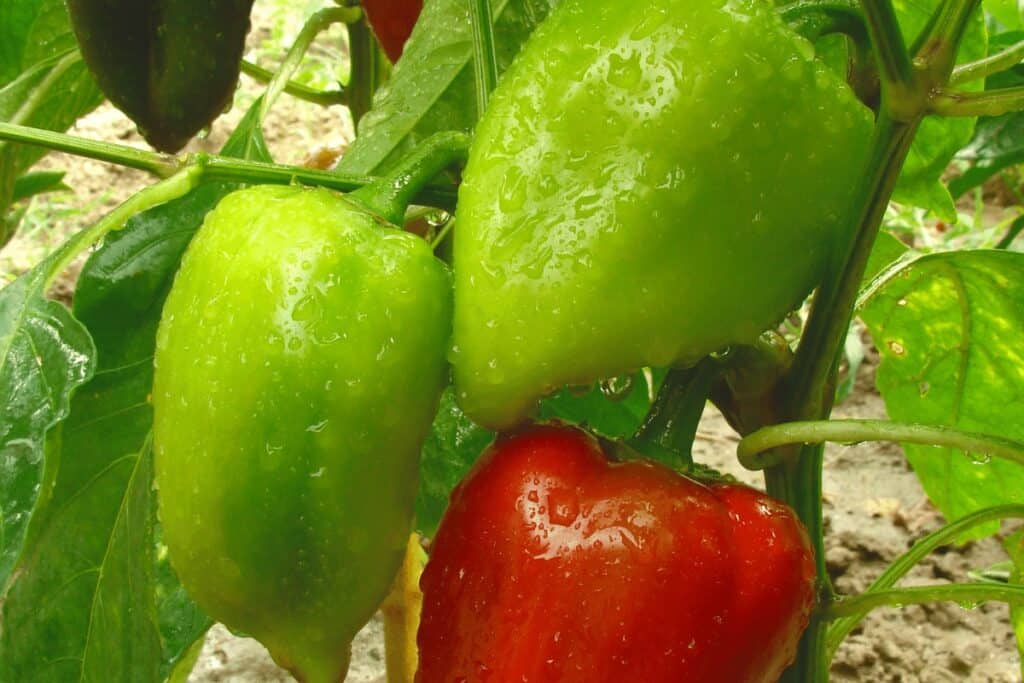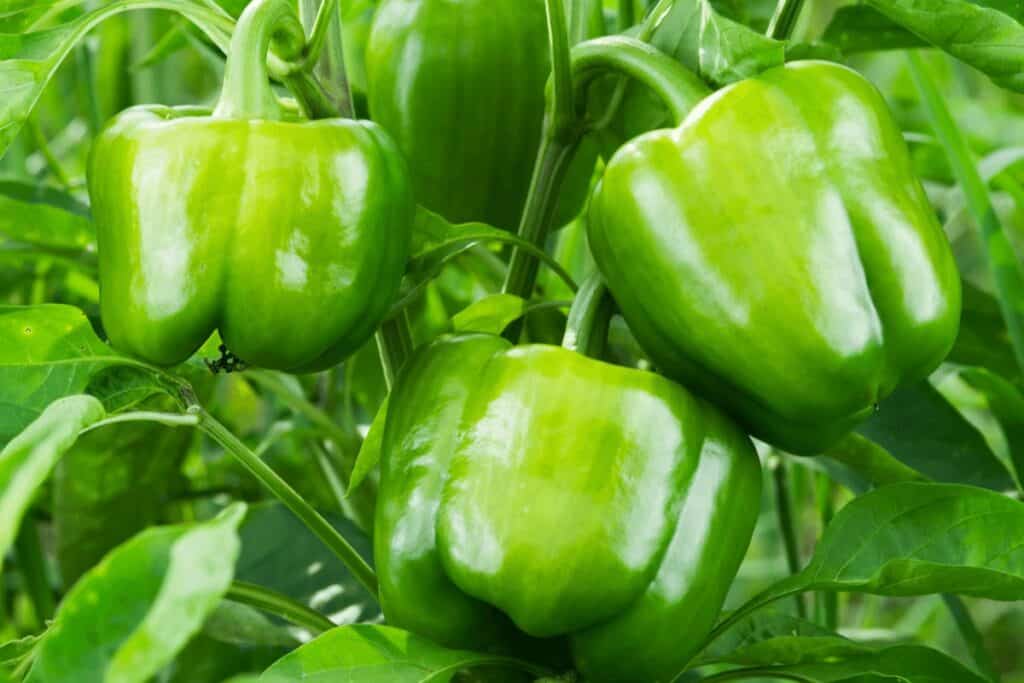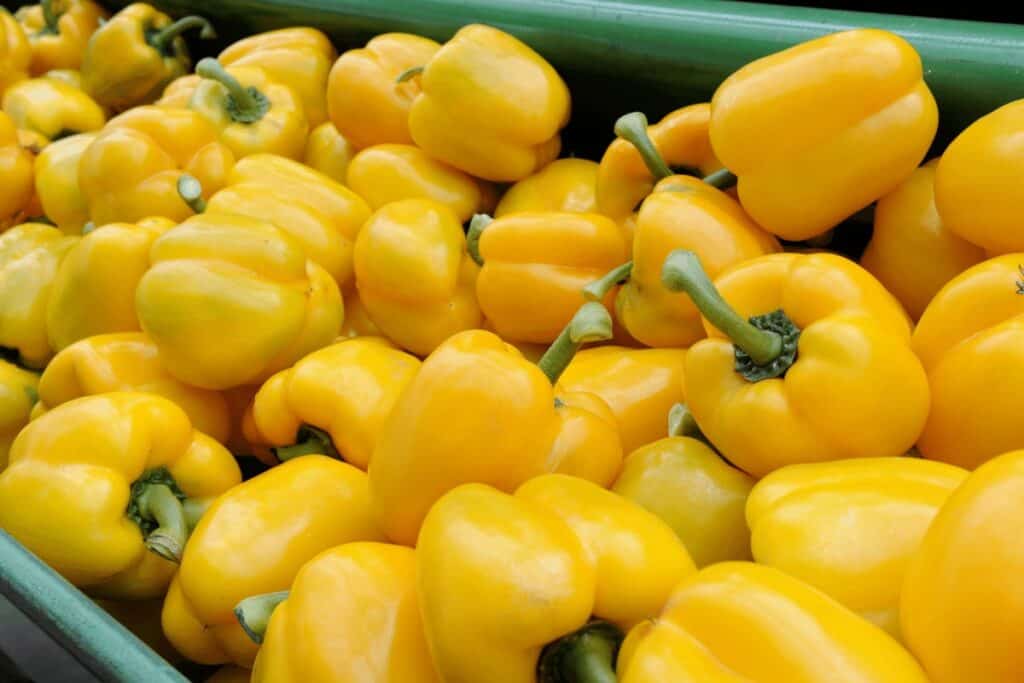You’re a passionate gardener who is looking to add some spice to your life. You’ve decided to grow pepper plants, but you’re not sure how tall they can grow. You’re wondering if the height of the plant will affect its yield, and if there are any tips you can use to encourage your pepper plants to grow taller. This article will cover the average height for pepper plants, how the plant’s height affects its yield, and some tips on encouraging your pepper plants to grow taller.
One of the common challenges faced by gardeners who want to grow pepper plants is not knowing how tall the plants can grow. This can affect the yield of the plant, as well as the health of the plant. If the plant is too tall, it can fall over and damage the peppers. If the plant is too short, it might not produce as many peppers. Another challenge is that pepper plants can be susceptible to pests and diseases, which can affect their growth. Finally, some gardeners find it difficult to get their pepper plants to grow tall because they live in an area with a short growing season. By understanding how tall pepper plants can grow, gardeners can overcome these challenges and grow healthy and productive plants.
If you’re struggling with getting your pepper plants to grow tall, you’re not alone. Many gardeners face challenges when it comes to growing pepper plants. In this article, we’ll be discussing how tall pepper plants can grow. We’ll cover the average height for pepper plants, how the plant’s height affects its yield and some tips
Introduction
One of the most important things to consider when growing pepper plants is how tall they can grow. The height of the plant can affect its yield, as well as the health of the plant. If the plant is too tall, it can fall over and damage the peppers. If the plant is too short, it might not produce as many peppers. That’s why it’s important to understand how tall pepper plants can grow so that you can make sure your plants are healthy and productive.
What Is the Average Height for Pepper Plants?
The average height for a pepper plant is about two feet. However, there can be some variation in height, depending on the type of pepper plant. For example, bell pepper plants tend to be shorter, while jalapeño pepper plants can grow taller.

Different types of pepper plants
Peppers are one of the most popular vegetables in the world, and there are many different types to choose from. Bell peppers are the most common type, and they come in a variety of colors including green, red, yellow, and orange. These peppers are typically mild in flavor and can be used in a variety of dishes. hotter pepper varieties include jalapeños, serrano peppers, and habanero peppers. These peppers are often used in spicy dishes or as a condiment. Finally, sweeter pepper varieties include bell pepper varieties including sweet banana pepper, and pimento pepper. These pepper types are typically used in salads or as a garnish. No matter what type of pepper you choose, they are sure to add some flavor to your dishes.
The average height of different types of pepper plants
As we mentioned before, the average height for a pepper plant is about two feet. However, there can be some variation in height, depending on the type of pepper plant. For example, bell pepper plants tend to be shorter, while jalapeño pepper plants can grow taller. The height of the plant can also be affected by the growing conditions. For example, if the plant is grown in a pot, it will likely be shorter than if it was grown in the ground.
Why there is variation in height among different types of pepper plants
There is a great deal of variation in pepper plant heights, with some species reaching over 10 feet tall while others are only a few inches in height. The reason for this variation is primarily due to the different growth habits of pepper plants. Some pepper plants, such as bell peppers, are determinate growers, meaning that they reach a certain size and then stop growing. Others, like hot peppers, are indeterminate growers and will continue to grow and produce fruit throughout the season. The height of a pepper plant can also be affected by its environment, with plants grown in hot, dry conditions tending to be shorter than those grown in cooler, moister climates. Ultimately, the variation in pepper plant heights is a result of both the plant’s growth habit and its environment.
How Does the Height of A Pepper Plant Affect Its Yield?
The height of the plant can affect its yield, as well as the health of the plant. If the plant is too tall, it can fall over and damage the peppers. If the plant is too short, it might not produce as many peppers. That’s why it’s important to understand how tall pepper plants can grow so that you can make sure your plants are healthy and productive.

The relationship between plant height and yield
One of the most important factors in determining the yield of a pepper plant is its height. Tall pepper plants tend to produce more peppers than shorter plants, due to their increased exposure to sunlight and ability to access more nutrients from the soil. However, pepper plants that are too tall may be more susceptible to wind damage and pests. As a result, finding the right balance between height and yield is essential for pepper growers. In general, taller pepper plants will produce higher yields, but the trade-off must be carefully considered before deciding on a planting strategy.
How pepper plant height can affect the health of the plant
One of the most important factors in determining the yield of a pepper plant is its height. Tall pepper plants tend to produce more peppers than shorter plants, due to their increased exposure to sunlight and ability to access more nutrients from the soil. However, pepper plants that are too tall may be more susceptible to wind damage and pests. As a result, finding the right balance between height and yield is essential for pepper growers. In general, taller pepper plants will produce higher yields, but the trade-off must be carefully considered before deciding on a planting strategy.
Why it’s important to understand how tall pepper plants can grow
Peppers are a common ingredient in many cuisines around the world, and there are countless varieties to choose from. While they can vary widely in color, flavor, and heat level, all pepper plants share one important characteristic: they can grow to be quite tall. In fact, pepper plants can reach up to three feet in height. This is important to keep in mind when planting pepper seeds, as they will need plenty of room to grow. Additionally, pepper plants should be spaced at least two feet apart to allow for proper airflow and prevent disease. By understanding how tall pepper plants can grow, gardeners can ensure that their pepper patch stays healthy and productive.
What Are Some Tips for Getting Pepper Plants to Grow Taller?
Here are some tips for getting your pepper plants to grow taller:

Choose a tall variety of pepper plants
Peppers come in many different varieties, and each has its own unique flavor and level of spiciness. When choosing pepper plants for your garden, it is important to consider the different types of peppers that are available. For example, Bell peppers are a good choice for those who want a milder pepper, while jalapeños and habaneros are better suited for those who enjoy a spicy kick. If you are looking for a pepper plant that will produce a large yield, choose a tall variety such as the California Wonder or the Big Bertha. These plants can reach up to four feet in height, and each one can produce several pounds of peppers. With so many different pepper plants to choose from, it is important to select the right variety for your garden.
Plant the pepper plant in a sunny spot
Pepper plants need a lot of sunlight to thrive, so it’s important to choose a spot in your garden that gets plenty of sun. Pepper plants are also quite sensitive to temperature changes, so you’ll need to make sure the spot you choose is protected from strong winds or direct afternoon sun. Once you’ve found the perfect spot, preparing the soil is the next step. Pepper plants prefer well-draining soil that’s rich in organic matter, so amend your soil with compost or manure before planting. Once your pepper plant is in the ground, water it deeply and regularly, especially during hot, dry weather. With proper care, your pepper plant will produce an abundance of delicious peppers that you can enjoy all season long.
Water the pepper plant regularly
One of the most important things you can do to ensure a healthy pepper plant is to water it regularly. Peppers need at least 1-2 inches of water per week, and it’s best to water deeply and less often rather than shallowly and more frequently. When peppers are first starting out, they need to be watered daily. Once they become established, you can cut back to every other day or every three days. Be sure to check the soil before watering; if it’s moist, you don’t need to water it. Over-watering can be just as harmful as underwatering, so it’s important to strike a balance. With a little care, your pepper plant will thrive.
Fertilize the pepper plant according to the manufacturer’s instructions
Pepper plants are popular choices for home gardens, as they are relatively easy to care for and produce a bountiful harvest. One of the key things to remember when growing pepper plants is to fertilize them regularly. Peppers are heavy feeders, which means they require a lot of nutrients to produce healthy fruit. Fertilizing pepper plants according to the manufacturer’s instructions will help ensure that they get the nutrients they need. This may include applying a balanced fertilizer every two weeks or using a higher-nitrogen fertilizer during the early stages of growth. Either way, regular fertilization is essential for pepper plants to reach their full potential.
Stake the pepper plant if it starts to lean
Any gardener worth their salt knows that a pepper plant will eventually start to lean if it isn’t staked. This is because the pepper plant is a heavy plant with fruit that hangs down, causing the plant to lose its balance and lean to one side. If the pepper plant isn’t staked, it will eventually topple over, which can damage the plant and make it difficult for the pepper plant to produce fruit. To avoid this, simply stake the pepper plant when it starts to lean. This will help to support the pepper plant and keep it upright so that it can continue to produce delicious peppers. By following these tips, you can encourage your pepper plants to grow taller and produce a bountiful crop of peppers.
In Conclusion
Pepper plants can grow quite tall – up to four feet in some cases. The plant’s height can affect its yield, but with proper care, a pepper plant can produce a bountiful crop of peppers. Some tips for encouraging a pepper plant to grow taller include planting it in a sunny spot, watering it regularly, and fertilizing it according to the manufacturer’s instructions. Staking the pepper plant if it starts to lean will also help to keep it upright and encourage fruit production. By following these tips, you can encourage your pepper plants to reach their full potential.
FAQ
How tall can a pepper plant grow?
Pepper plants can grow quite tall – up to four feet in some cases. The plant’s height can affect its yield, but with proper care, a pepper plant can produce a bountiful crop of peppers.
What are some tips for encouraging a pepper plant to grow taller?
Some tips for encouraging a pepper plant to grow taller include planting it in a sunny spot, watering it regularly, and fertilizing it according to the manufacturer’s instructions. Staking the pepper plant if it starts to lean will also help to keep it upright and encourage fruit production.
How does the height of a pepper plant affect its yield?
The height of a pepper plant can affect its yield, but with proper care, a pepper plant can produce a bountiful crop of peppers. Some tips for encouraging a pepper plant to grow taller include planting it in a sunny spot, watering it regularly, and fertilizing it according to the manufacturer’s instructions. Staking the pepper plant if it starts to lean will also help to keep it upright and encourage fruit production.
What are some common problems with pepper plants?
Common problems with pepper plants include stunted growth, yellow leaves, and blossom end rot. These problems can be caused by a number of factors, including poor nutrition, drought stress, and excessive fertilizer. To avoid these problems, it is important to fertilize the pepper plant according to the manufacturer’s instructions, water it regularly, and provide it with plenty of sunlight.
Latest Posts
- What Types of Lettuces Can You Grow?

- How to Plant Onion Seeds for Maximum Germination

- How to Plant Parsnip Seeds for Maximum Germination

- How to Plant Mushroom Seeds for Maximum Germination

- How to Plant Lettuce Seeds for Maximum Germination

- How to Plant Kale Seeds: A Step-by-Step Guide to Maximum Germination Success!








